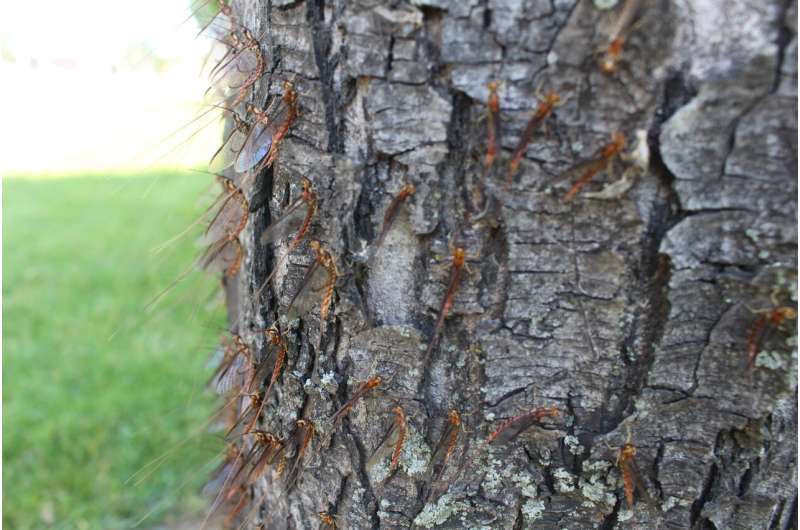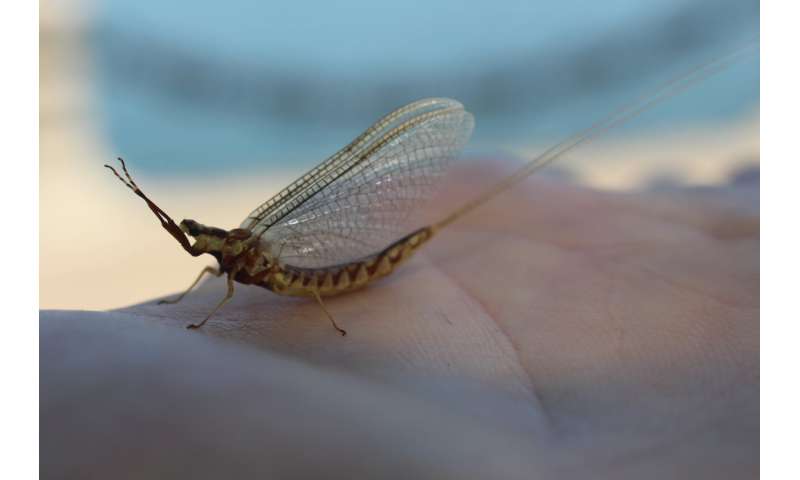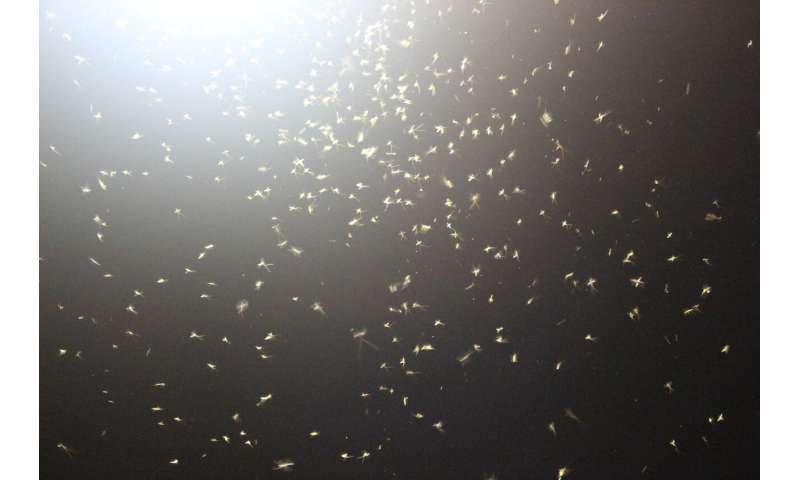January 21, 2020 report
Mayfly populations falling fast in North America

A team of researchers from the University of Oklahoma, Virginia Tech and the University of Notre Dame has found that populations of mayflies in parts of North America have fallen dramatically in recent years. In their paper published in the Proceedings of the National Academy of Sciences, the group describes using weather radar data to calculate mayfly populations and what they learned about them.
Mayflies are aquatic insects that live in many parts of the world—in North America, they exist largely around the Great Lakes and in the Mississippi River Basin. They are quite often mistaken for dragonflies. Mayflies live in the water as nymphs and move to the land as adults. Once on land, they go through two molts before they are able to fly—the time between the first and second leaves them vulnerable to predators such as birds. Mature adults do not eat; their only known function is to find a mate and reproduce. In North America, the nymphs live in shallow parts of the Great Lakes and in rivers such as the Mississippi. Once mature, they fly in large swarms that can number in the billions—the swarms are large enough to show up on weather radar. The researchers with this new effort used weather radar data from 2012 to 2019 to calculate swarm sizes and subsequently mayfly populations.
The radar revealed a dramatic decline in mayfly populations in both major areas. The number was down 84 percent in the Lake Erie area over the years 2015 to 2019, and down 52 percent in the Upper Mississippi area over the years 2012 to 2019.
The researchers suggest that the population declines were likely due to deteriorating water quality. They note that water temperatures in the Great Lakes have been rising due to global warming, algae blooms have been spreading due to fertilizer runoff from farms, and there has been an increase in pesticides, particularly neonicotinoids, making their way into the Great Lakes and the Mississippi River. The declining mayfly population is a concern because they are an indicator of water quality, as well as a major source of food for a large number of animals.
-

Adult mayflies following an emergence on Lake Erie. Credit: Phillip M. Stepanian. -

Adult mayflies following an emergence on Lake Erie. Credit: Phillip M. Stepanian.
More information: Phillip M. Stepanian el al., "Declines in an abundant aquatic insect, the burrowing mayfly, across major North American waterways," PNAS (2020). www.pnas.org/cgi/doi/10.1073/pnas.1913598117
Journal information: Proceedings of the National Academy of Sciences
© 2020 Science X Network




















